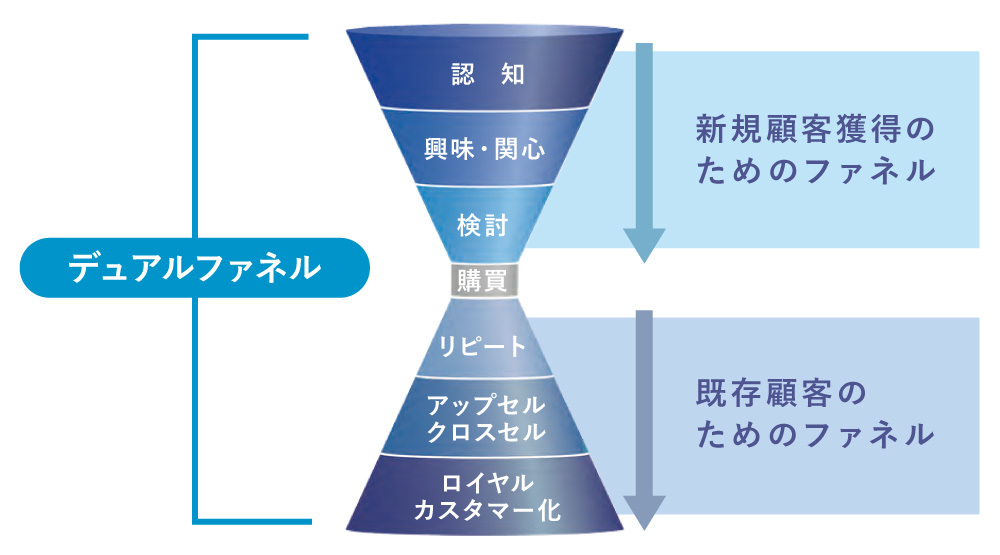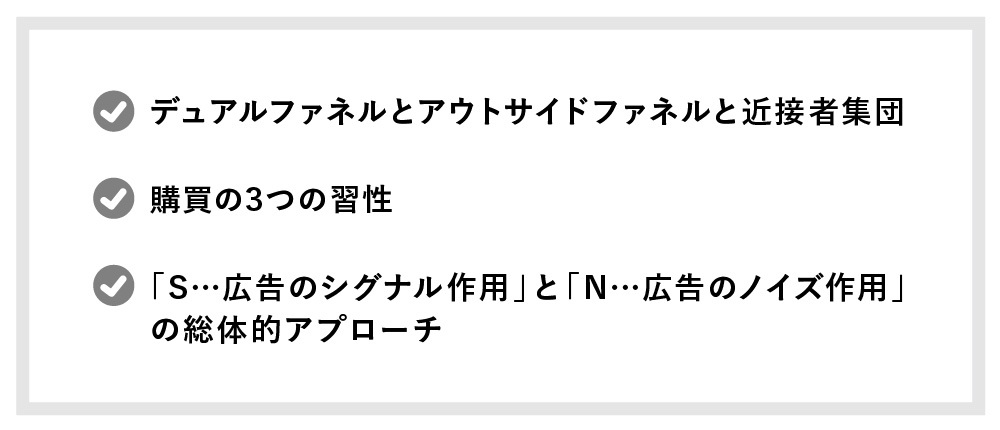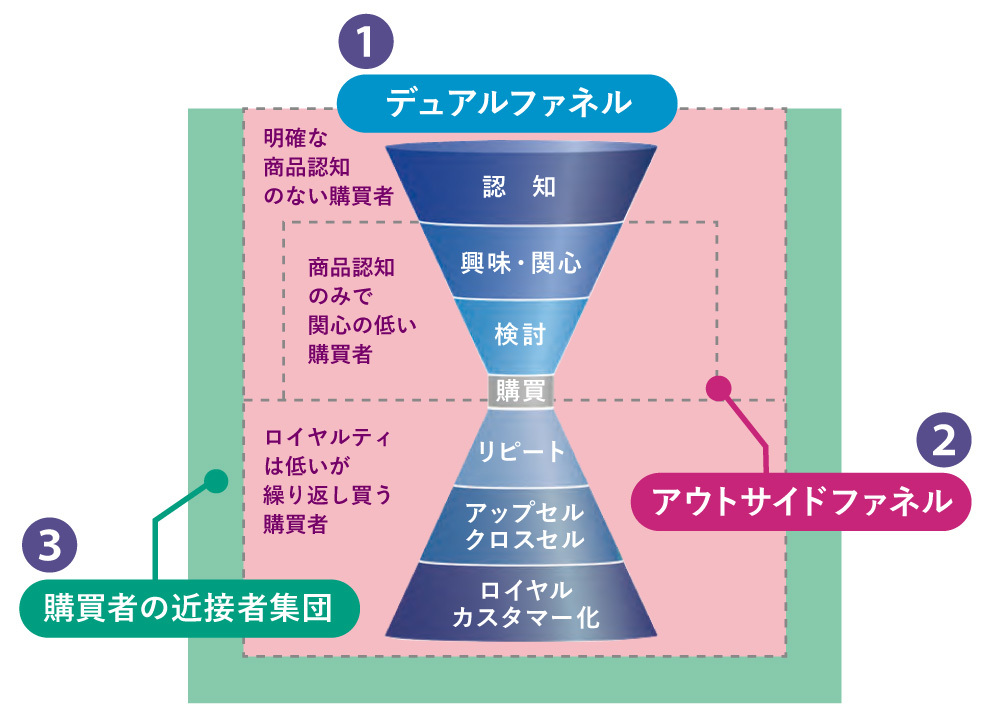Rethinking "How People Buy Things"
At Dentsu Inc., we practice efficient marketing with a focus on the "Dual Funnel(※1)" to contribute to our clients' sales growth and customer understanding.

※1 = Dual Funnel
A funnel that integrates the funnel for "Acquiring New Customers" with the funnel for "Nurturing Existing Customers"
Based on this concept, Dentsu Inc.'s cross-functional "SN Project Team (※2)" has been conducting research to reexamine "how people buy things" from a behavioral economics perspective. This research focuses on two viewpoints: "overall sales management" and "new ways to visualize the value of advertising and PR activities."
※2 = SN Project Team
This is a cross-functional internal research team comprising specialists from Dentsu Inc.'s Marketing Division, Data Solutions Division, and Media Division. "SN" was chosen to reflect the core research findings: the "signaling effect/noise effect of advertising."
This series introduces the " SN Theory," a new marketing concept based on the findings from this project's research and analysis.
The following keywords appear in this theory:
[SN Theory Keywords]

While many unfamiliar terms appear, following this series will help you understand a new perspective on marketing: .
The proportion of "uninterested people" in sales
Dentsu Inc. conducted a survey of people who purchased items from seven daily consumer goods categories. The questions asked were as follows:
- "Were you interested in the product you purchased?"
- "Were you interested in that product category?"
The graph below shows the percentage of purchasers in each category who had no interest in either the product category or the specific product (brand) they bought.

Dentsu Inc. Independent Survey (July 2021)
While the figures vary by category, on average, 40% of purchasers fall into the category of "people with no interest in either the product category or the purchased brand."
The brands surveyed this time are all highly recognized within their respective categories. There is likely some connection between "becoming a more mainstream brand" and capturing a certain level of " " within the customer base.
The Impact of Word-of-Mouth and Conversations on Purchasing
Here's another interesting finding from the survey results.
The graph below analyzes the differences between those who purchased lemon sour drinks (5 brands) categorized as "people interested in the category or brand" and "people not interested in either the category or brand."
In fact, regardless of interest level, "having some conversation about the purchased brand with people around them or on social media" influenced their purchase.

Dentsu Inc. Independent Survey (July 2021)
Readers may recognize this phenomenon from their own lives.
For example
- When someone close to you has a new product or talks about it, it tends to stick in your memory.
- When you hear about a movie from people around you, on social media, in the news, and various other places, you start wanting to see it.
- When buying something expensive, I talk it over with my family to get their agreement.
- When deciding where to work, I prioritized companies that are well-known and easy to explain to family.
And so on... Our shopping and actions are influenced by our surroundings more than we might realize, not just by our own interests and concerns.
Dual Funnel, Outside Funnel, Proximity Group
Now, based on these analyses, we can divide the market into several areas from a new perspective.
First is the "Dual Funnel" area. This primarily encompasses customers who "increase interest in the product," forming the core of marketing activities.
Various methods have been developed to break down the customer purchasing process and quantitatively evaluate the correlation between increased product interest and sales. This is the area that should be considered first for efficient and stable business growth.

Conversely, it has been verified that as sales expand, the proportion of "uninterested customers" also increases. This segment can be considered positioned "outside the Dual Funnel... the Outside Funnel."
Further critical elements were "word-of-mouth" and "facilitating conversations within personal networks." As discussions spread among those without purchase experience, opportunities for the product to enter potential buyers' consideration sets are broadly created. This influences both the dual funnel and the outside funnel, positioning it as the "proximal group" layer, further outward.
The resulting diagram is shown below. It combines the two areas constituting sales on top of the dual funnel base. This represents the market perspective underlying SN theory: "the inside and outside of the (dual) funnel."
So, what psychological and behavioral triggers prompt people in these three areas (Dual Funnel, Outside Funnel, Proximity Group) to make purchases? Next time, we'll address this question from the perspective of "Three Habits of Purchase."
[Survey Overview]
Dentsu Inc. Independent Survey Overview
Survey Period: July 19, 2021 - July 25, 2021
Area: Kanto region (Tokyo and six prefectures)
Sample Size: 4,000 respondents
Note: Surveyed 20 brands across 7 FMCG categories









